I Will Live
Visit this page for information and links to online suicide prevention-related resources. Learn more about the National Suicide Prevention Lifeline and related resources by clicking the link. The Lifeline is free, confidential, and available 24/7.
World Suicide Prevention Day Webinar
- Talk to someone: Silence isn’t strength. Don’t keep suicidal feelings to yourself. Lean on your support network, find a therapist or a support group, or get in touch with Lifeline.
- Make a safety plan: Have a step-by-step plan ready for if/when you feel depressed, suicidal, or in crisis, so you can start at step one and continue through the steps until you feel safe.
- Build your support network: Having a sense of belonging to one’s culture, or a strong tribal/spiritual bond can be helpful. Discuss problems with family or friends — feeling connected to others can create positive emotional health.
- Find an activity you enjoy: Taking care of yourself is an important part of your recovery. Your “self-care” activities can be anything that makes you feel good about yourself.
For more information on the 988 Suicide & Crisis Lifeline, you can visit www.suicidepreventionlifeline.org.
Thank you Fort McDowell Yavapai Nation Youth Council for sharing Your messages of hope.
Why Address Suicide Prevention
- Many AI/AN communities experience an elevated suicide rate.1
- AI/AN communities may lack access to suicide prevention programs that meet their cultural needs.
How AI/AN Communities Can Take Action
The best way to prevent suicide is to use a culturally relevant, contextually driven, comprehensive approach that includes these key components:
- Promote culturally competent practices that increase protective factors and reduce risk.
- Connect the community’s resources to create a shared vision of wellness.
- Gather information from Elders and community members to gain knowledge and understand the issue of suicide in the community where you are working.
- To learn more about warning signs please go to https://www.suicidology.org/resources/warning-signs.
Quick Links
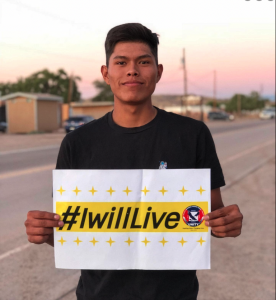
Native-Specific Manuals and Toolkits
Aboriginal Youth: A Manual of Promising Suicide Prevention Strategies (PDF | 2.7 MB)
Information for developing successful programs to prevent suicide among aboriginal youth.
Assessment and Planning Tool Kit for Suicide Prevention in First Nations Communities (PDF | 1.1 MB)
A toolkit to guide First Nations communities in creating suicide prevention plans.
Ensuring the Seventh Generation: A Youth Suicide Prevention Toolkit for Tribal Child Welfare Programs
A toolkit to help tribal child welfare workers and care providers take an active role in preventing suicide among the youth they serve.
The Northwest Suicide Prevention Tribal Action Plan (PDF | 443 KB)
An action plan for reducing suicide rates among American Indians and Alaska Natives by increasing tribal capacity and improving collaboration.
To Live To See the Great Day That Dawns: Preventing Suicide by American Indian and Alaska Native Youth
A guide to support American Indian and Alaska Native communities in developing effective, culturally appropriate suicide prevention plans.
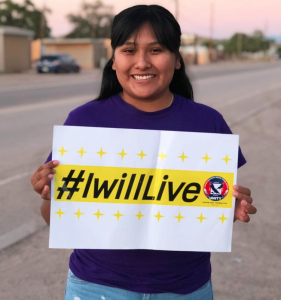
Suicide Prevention Resources:
Best Practices Registry for Suicide Prevention
Section III of the Best Practices Registry lists programs and materials that are designed for specific settings like schools, communities, or clinics. Section II offers general suicide prevention guidance.
The State of Alaska Suicide Prevention Website
Provides information on suicide, mental health, and related issues among Alaskans.
Suicide Prevention Resource Center
Helps with the development of suicide prevention programs, interventions, and policies, and advances the National Strategy for Suicide Prevention.
Suicide Prevention Fact Sheets
Suicide among Racial/Ethnic Populations in the U.S.: American Indians and Alaska Natives
Provides information on suicide and risk and protective factors among American Indians and Alaska Natives.
Suicide Facts at a Glance
A fact sheet from the Centers for Disease Control and Prevention.
We R Native
We R Native is a website for and by Native youth on many health and mental health issues, including suicide. It includes both information and personal stories from Native youth. We R Native also hosts the Native Crisis Text Line, where anyone in crisis or needing help can simply text ‘NATIVE’ to 741741 and be immediately connected with a trained crisis counselor. All support and resources shared will remain confidential.
Suicide Prevention Resource Center (SPRC)
SPRC’s “American Indian/Alaska Native Settings” webpage provides access to a wide range of suicide prevention resources for American Indians and Alaska Natives.
Substance Abuse and Mental Health Services Administration (SAMHSA)
The Tribal Training and Technical Assistance Center offers training and technical assistance on mental and substance use disorders, suicide prevention, and mental health promotion for AI/AN communities. “American Indian and Alaska Native: Tribal Affairs” is a webpage with links to many national resources on behavioral health, including suicide, that are helpful for American Indian/Alaska Native people.
Indian Health Service
IHS’ “Suicide Prevention and Care Program” webpage provides information and links to resources on suicide prevention and care for Native people.
Native Connections
Native Connections is a five-year grant program that helps American Indian/Alaska Native communities identify and address the behavioral health needs of Native youth.
Tribal Health: Reaching out InVolves Everyone
Tribal Health: Reaching out InVolves Everyone (THRIVE) is a suicide prevention project of the Northwest Portland Area Indian Health Board with a website that has resources for Native people throughout the U.S.
One Sky Center
One Sky Center is a national resource center with a focus on improving the prevention and treatment of mental health and substance abuse problems and services among Native people.
Zero Suicide in Indian Country
The Best and Promising Practices for the Implementation of Zero Suicide in Indian Country aims to serve as a specialization step for health systems in Indian Country that are looking for guidance on how to implement the Zero Suicide framework in culturally relevant ways.
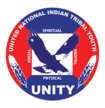

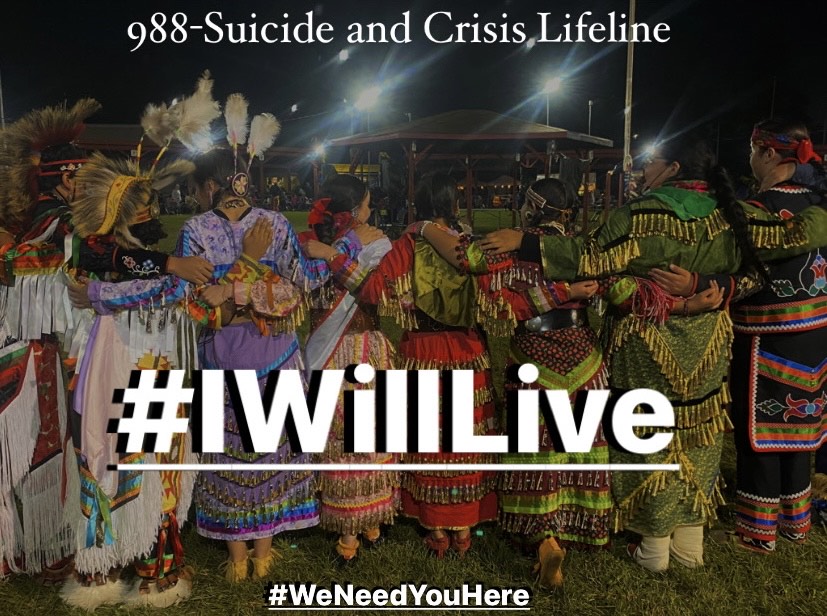
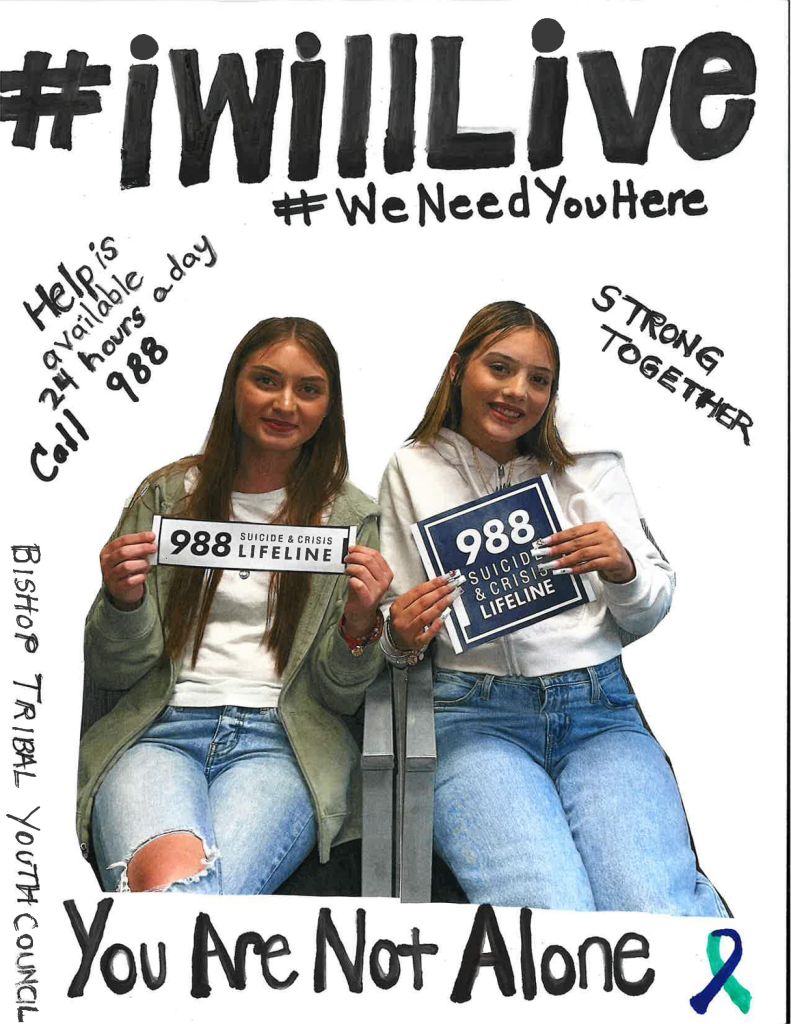
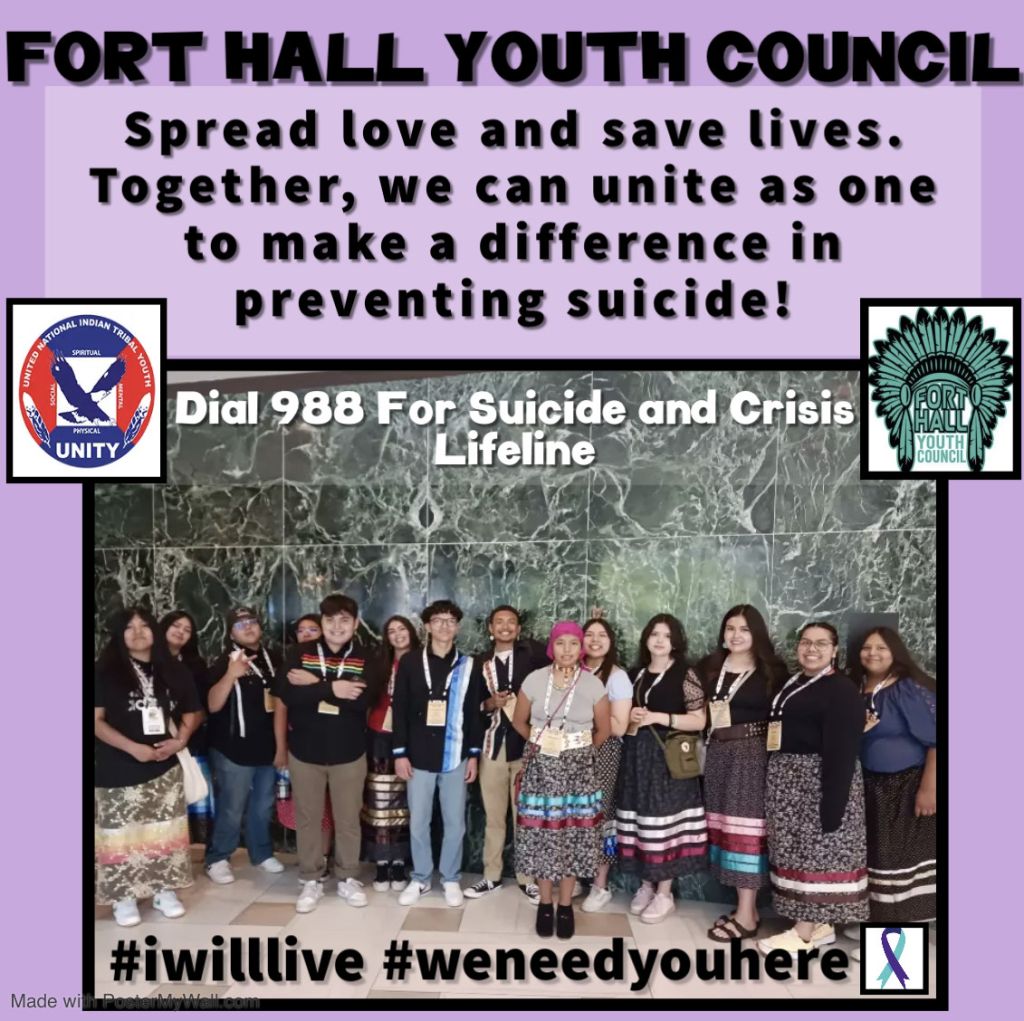
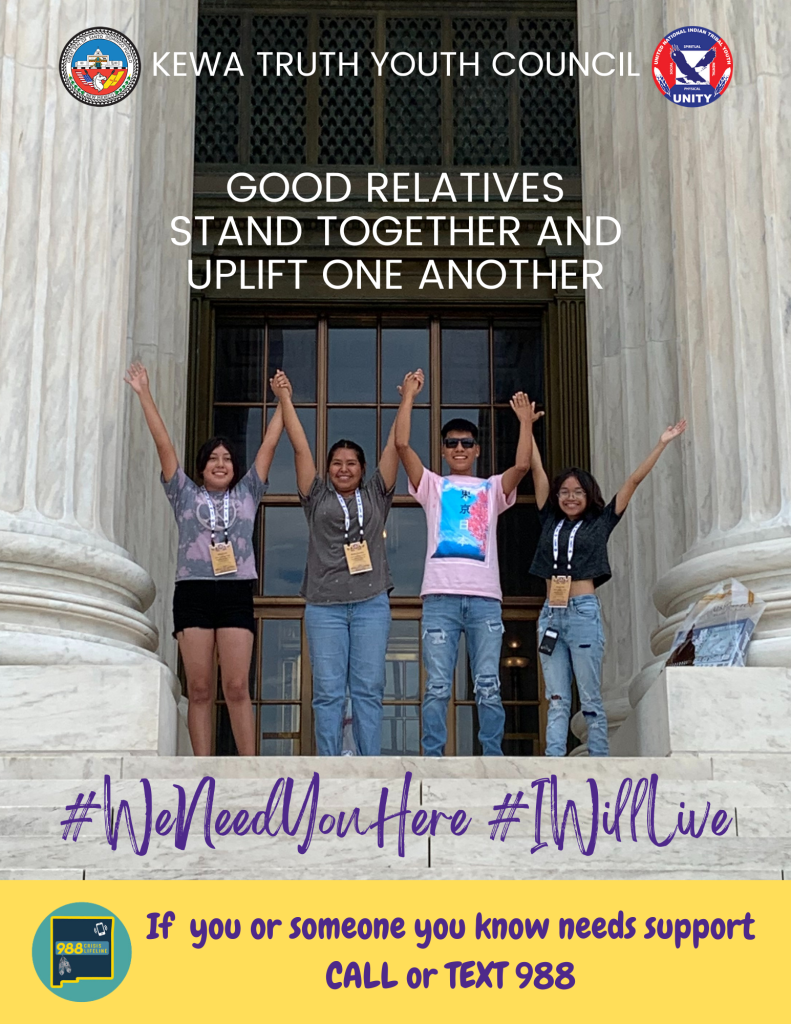
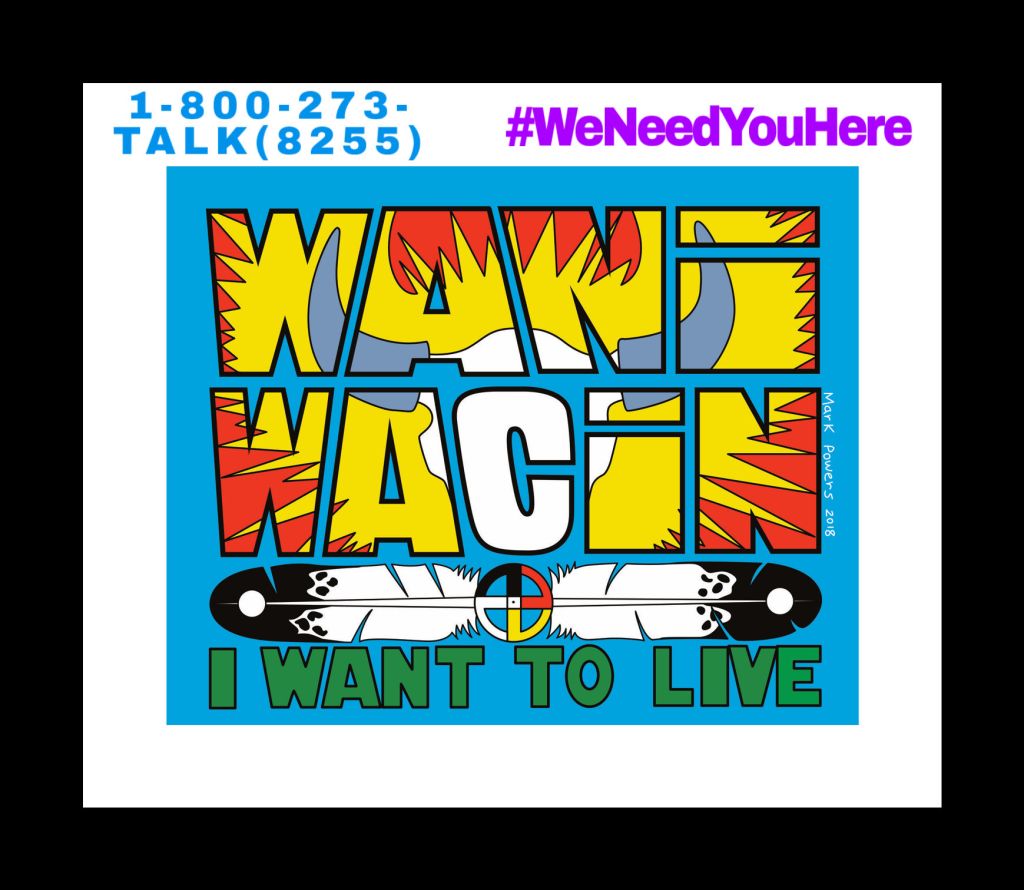
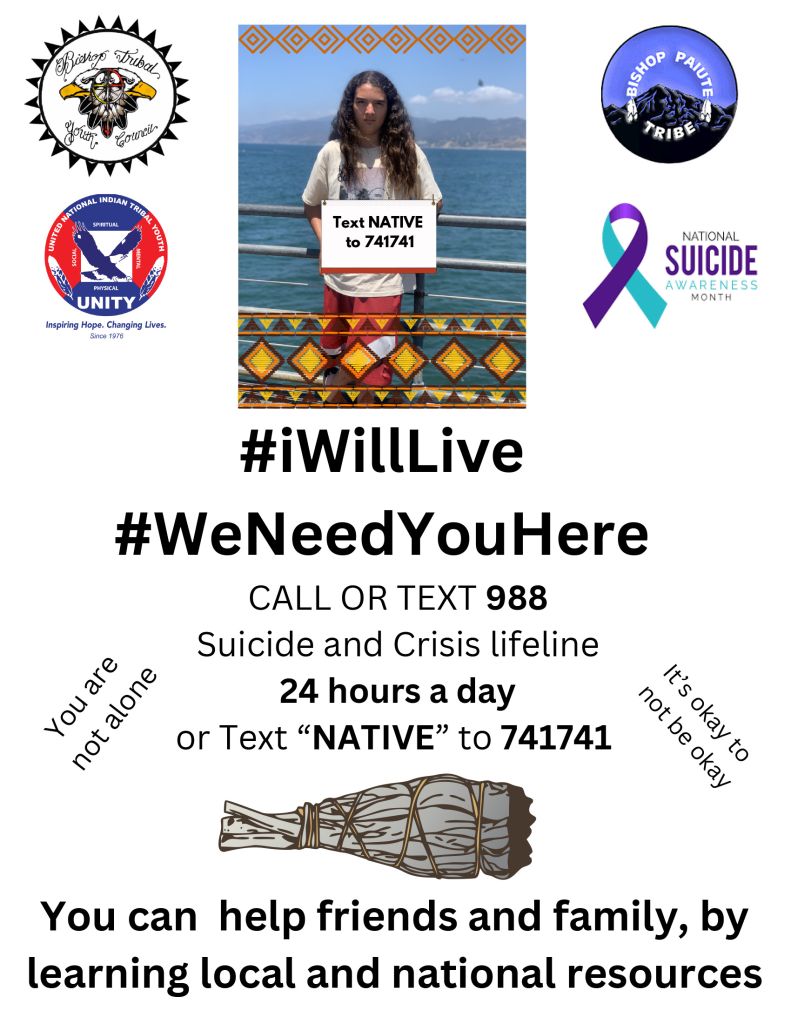
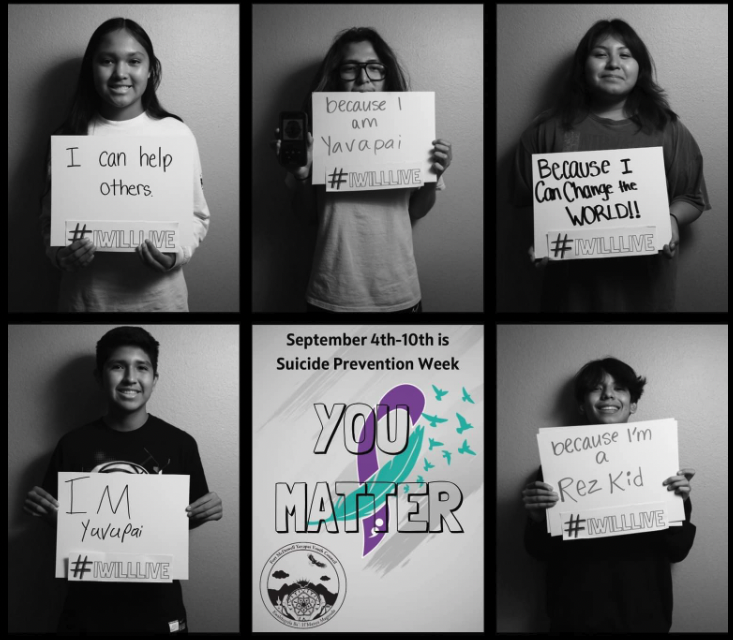
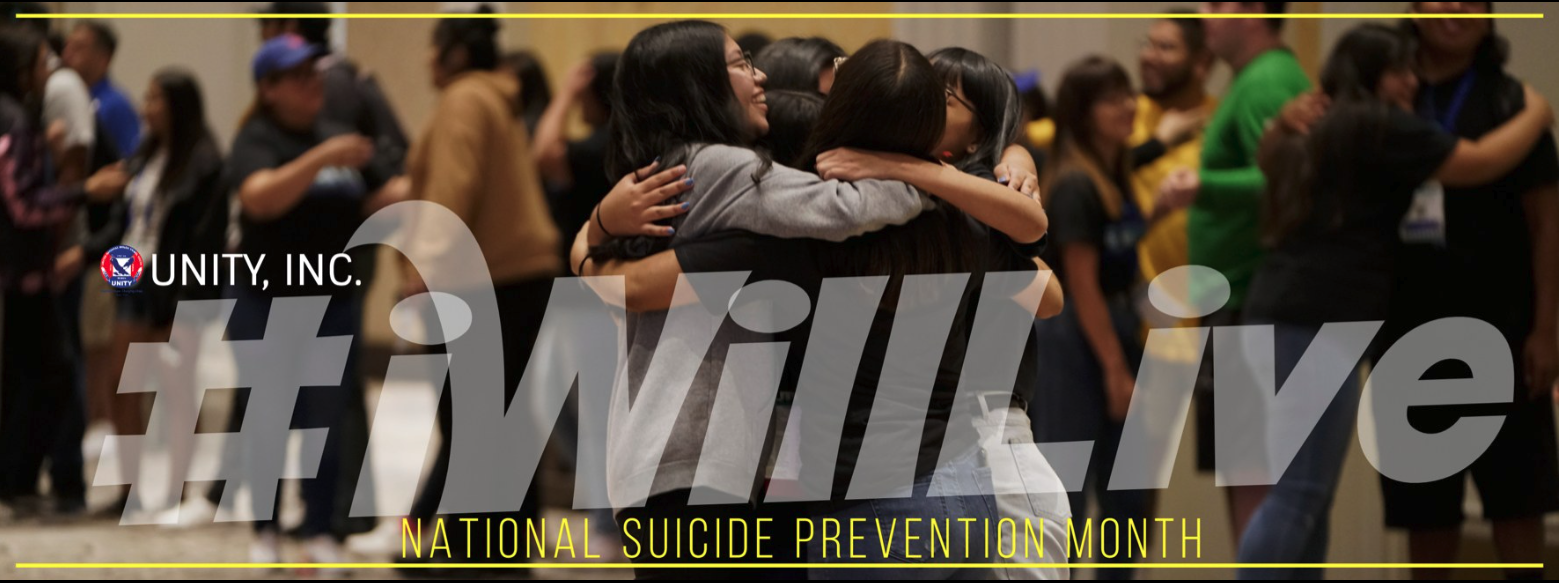
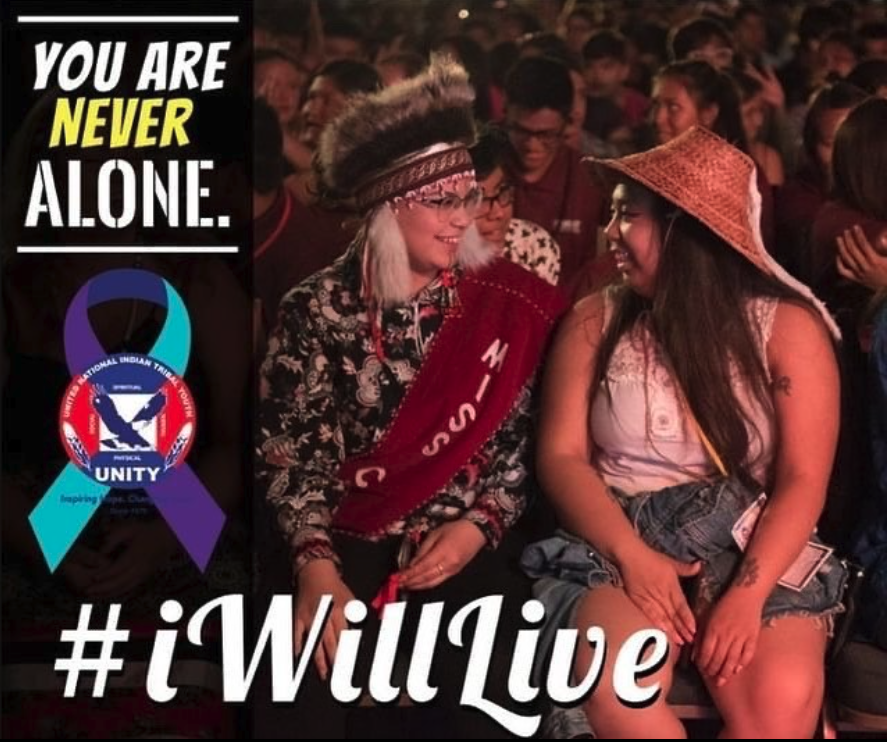
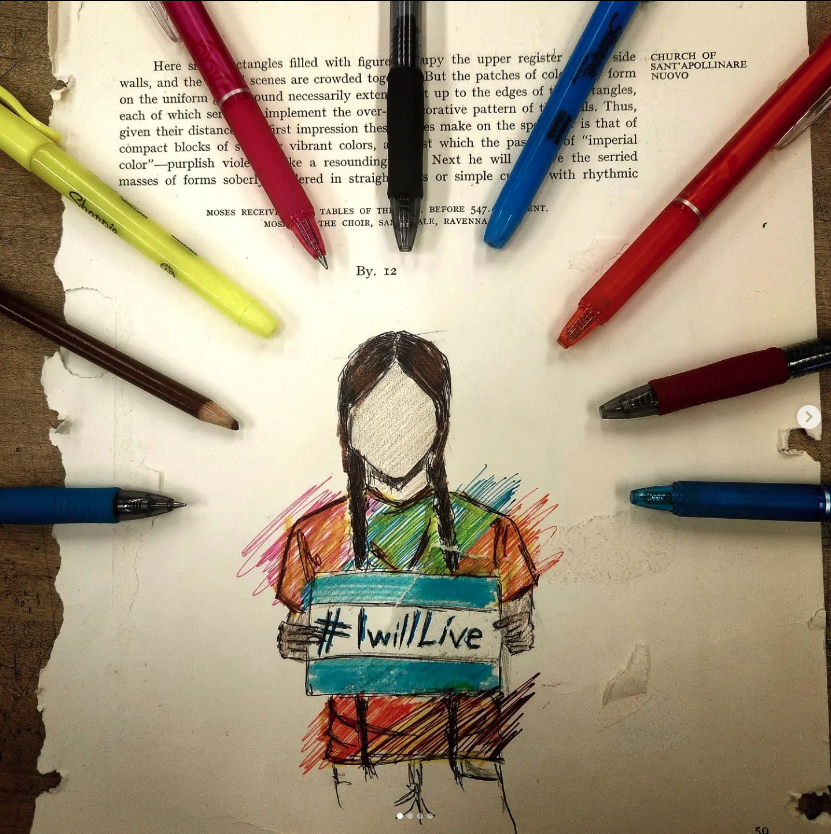 UNITY Youth Submission #IWillLive
UNITY Youth Submission #IWillLive